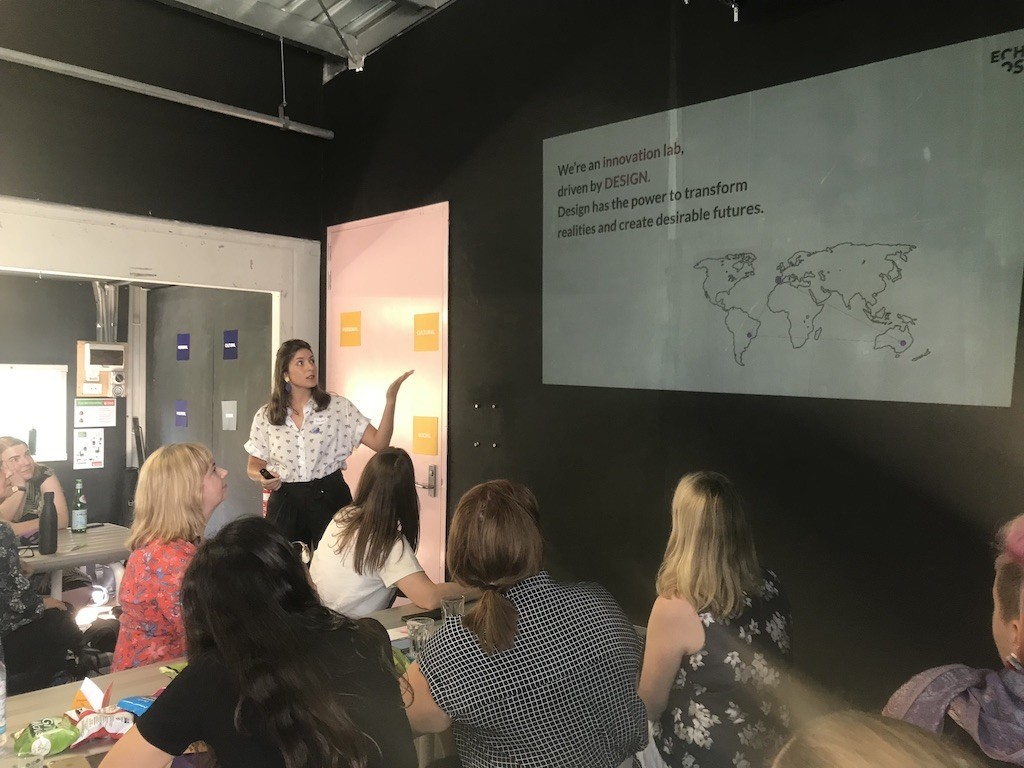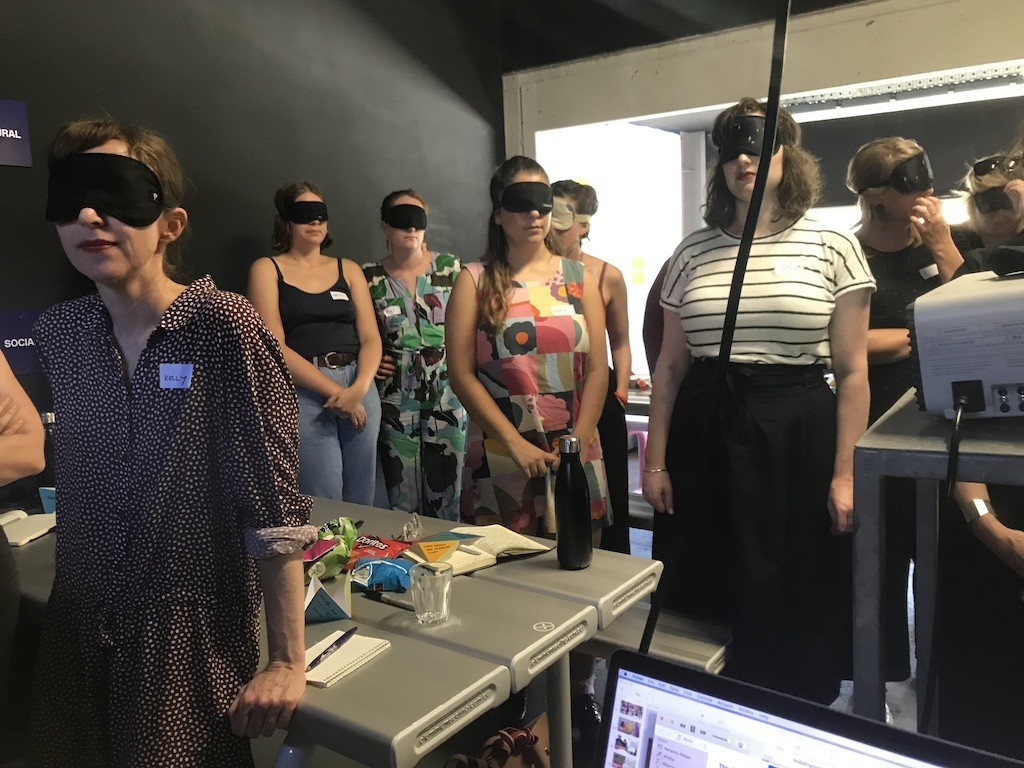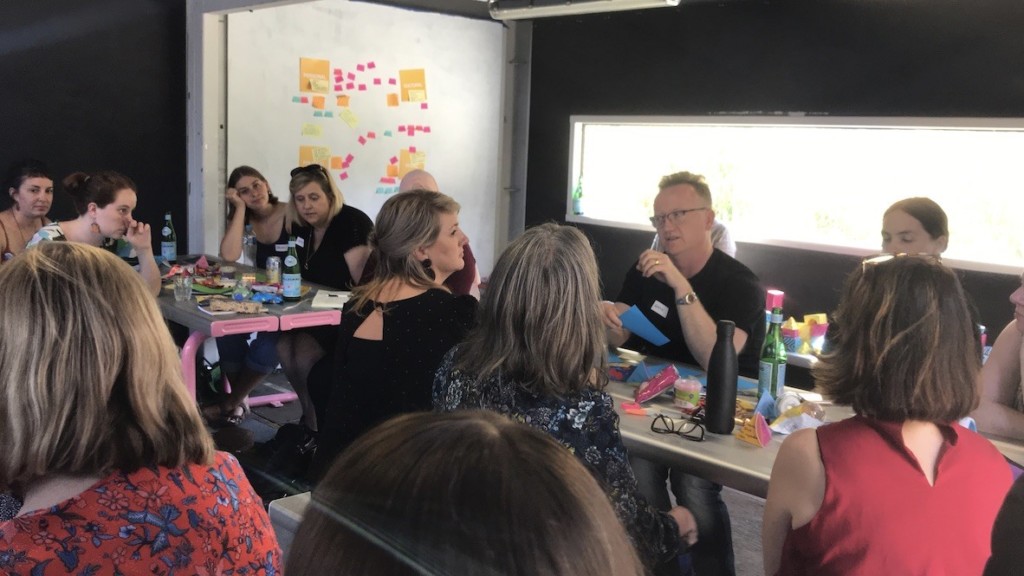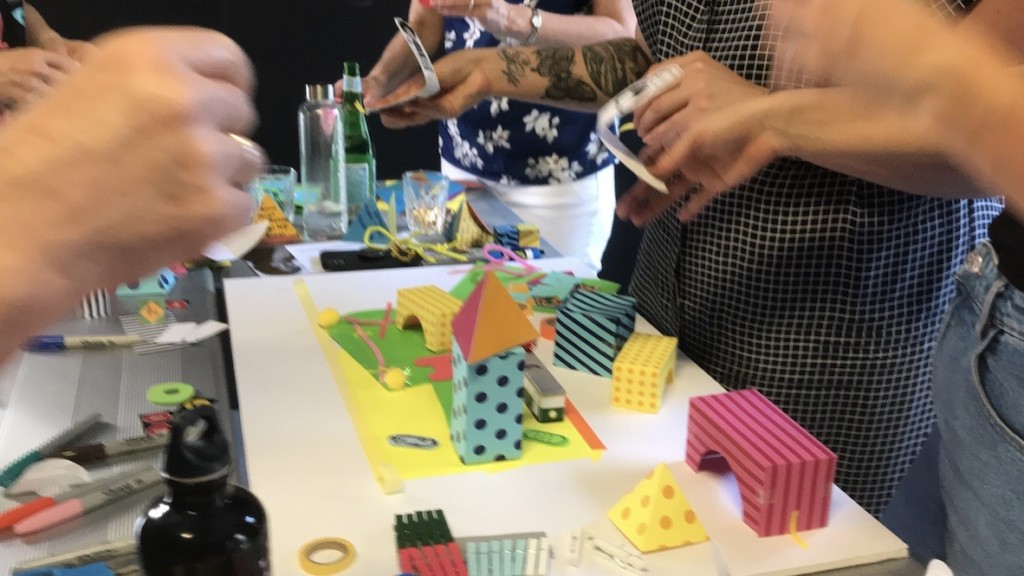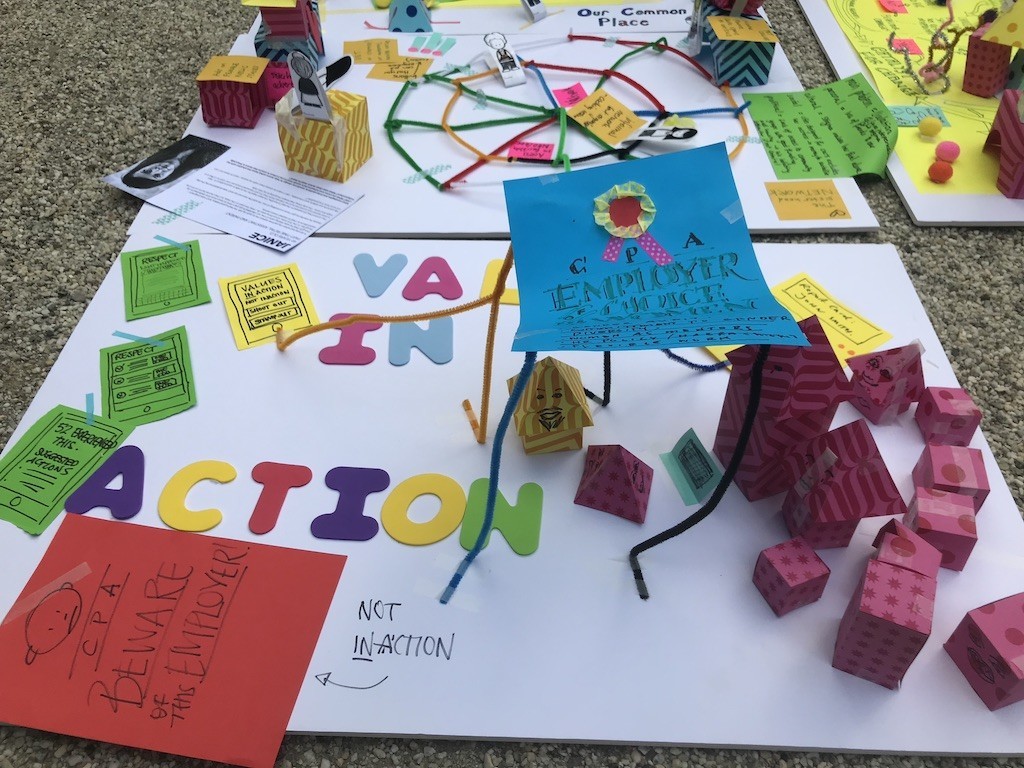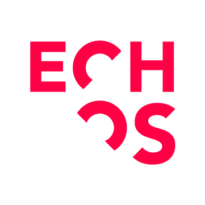As part of Melbourne Design Week I collaborated with Juliana Proserpio from Echos Innovation Lab and Nicole Kalms from Monash University XYX Lab to run an experimental workshop using Human Centred Design to see if we can disrupt the status quo around violence against women.
The prevalence of violence against women in Australia is overwhelming. 1 in 3 women have experienced physical violence since the age of 15, and on average one woman per week is murdered by her current or former partner. This session used design thinking and human-centred design methodologies to help participants understand common challenges in the complex landscape of violence faced by women on a daily basis.
Over 40 people crammed into our space at Testing Grounds to see how they can apply the principles of Design Thinking to create a future that was safe for women.
Juliana gave us some insights from the groundbreaking work Echos has been doing in Brazil with Project Iris – an initiative based on gaining community involvement in creating a desirable future in which gender equality and feminine freedom are realities. They have successfully trained design thinking ambassadors in each region in Brazil that in turn facilitate community workshops that can transform behaviours and design new possibilities.
Nicole Kalms also highlighted the fantastic work Monash University XYX Lab is currently doing – researching how urban spaces can be made safe for all genders. Their work operates at the intersection of gender, identity, urban space and advocacy.
This was followed by a ‘deep empathy’ session where we played an audio recording of a woman re-telling her story of discrimination, sexism and fear. Participants wore blindfolds to help them be in the moment, listen, and empathise with the story-teller.
The real work began when we split the group into 6, each focussing on a different scenario. Scenarios highlighted individual narratives set in the workplace, in public spaces and at home, where women faced exclusion, isolation, the threat of violence and discrimination.
Each group pulled the scenarios apart, to understand the deeper issues, pain-points and problems that needed to be solved within each context.
Using a combination of props, cutouts and specially designed 3D spacial tools, each group banded together to build a prototype demonstrating a solution to the problem. During this exercise, which we refer to as ‘building to think’, ideas grew spontaneously and enthusiastically as participants worked together to create a designed response.
It continually amazes me how a group of people can come together over a short amount of time and collaborate meaningfully to create fantastic solutions to complex problems. This is the power of Design Thinking in action – an innovative approach to solving complex problems through empathy, collaboration and prototyping.
The ability for Human-centred design to disrupt the status quo in this space is well proven. This experimental workshop helped us to understand how it can be applied and used to create simple, yet effective solutions. Over the next few months, I hope to develop a longer-term program in collaboration with community groups and service providers that can convert some of these brilliant ideas into action.
*You can read Vincent’s original article on his LinkedIn page.
—
Follow us on social
Instagram – Facebook – LinkedIn – Youtube
How Can We Help?
For training and Innovation Journeys in your company: check out our in-house course offering
For upcoming courses in your region: visit our website.
If you have a special project and would like to use Echos’ consultancy services: send us an email.
Want to speak to a real person? Call us on 1300 502 006


